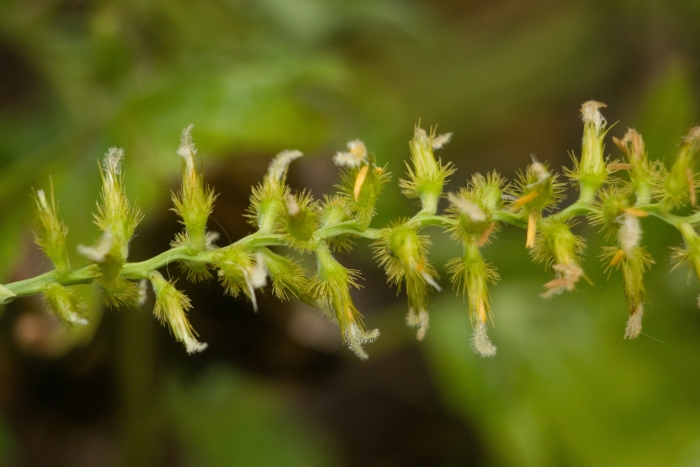Kāmanomano
(Cenchrus agrimonioides)
Kāmanomano (Cenchrus agrimonioides)
/
/

Kevin Faccenda
CC BY 4.0
Image By:
Kevin Faccenda
Recorded By:
Copyright:
CC BY 4.0
Copyright Notice:
Photo by: Kevin Faccenda | License Type: CC BY 4.0 | License URL: http://creativecommons.org/licenses/by/4.0/ | Rights Holder: Kevin Faccenda | Publisher: iNaturalist | Date Created: 2021-05-09T14:15:43-07:00 |






























Estimated Native Range
Summary
Cenchrus agrimonioides, commonly known as Kāmanomano, is a perennial grass species that is endemic to the Hawaiian Islands. It is typically found in dry to moist forests, as well as on lava plains, where it forms part of the unique Hawaiian ecosystem. This species is federally listed as endangered in the United States with fewer than 100 individuals remaining in the wild, primarily due to habitat loss and competition with invasive non-native plants. Kāmanomano is not known to be invasive outside of its native range, but it is threatened by predation from ungulates and wildfire within its habitat.
Kāmanomano is not commonly cultivated due to its endangered status and the specific ecological requirements it has. However, if it were to be grown, it would likely require a habitat that mimics its native environment, with well-draining soil and a mix of dry to moist conditions. It would also need protection from grazing animals and invasive species. As a rare and endangered plant, Kāmanomano is of particular interest to conservationists and botanists who aim to preserve the unique flora of Hawaii.CC BY-SA 4.0
Kāmanomano is not commonly cultivated due to its endangered status and the specific ecological requirements it has. However, if it were to be grown, it would likely require a habitat that mimics its native environment, with well-draining soil and a mix of dry to moist conditions. It would also need protection from grazing animals and invasive species. As a rare and endangered plant, Kāmanomano is of particular interest to conservationists and botanists who aim to preserve the unique flora of Hawaii.CC BY-SA 4.0
Plant Description
- Plant Type: Grass
- Height: 1-3 feet
- Width: 2-4 feet
- Growth Rate: Rapid
- Flower Color: N/A
- Flowering Season: Winter, Spring, Summer
- Leaf Retention: Deciduous
Growth Requirements
- Sun: Full Sun
- Water: Low
- Drainage: Medium, Fast
Common Uses
Erosion Control, Low Maintenance
Natural Habitat
Endemic to dry to moist forests and lava plains within the Hawaiian Islands
Other Names
Common Names: Sandbur, Bur Grass, Sandspur
Scientific Names: , Cenchrus agrimonioides, Cenchrus agrimonioides var. laysanensis, Cenchrus caliculatus var. uniflorus, Cenchrus caliculatus var. uniflorus, Cenchrus fusiformis, Cenchrus laysanensis, Cenchrus laysanensis, Cenchrus pedunculatus,
GBIF Accepted Name: